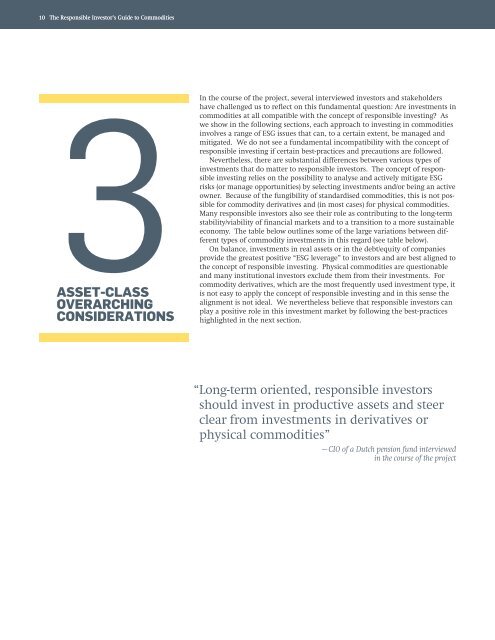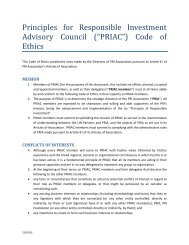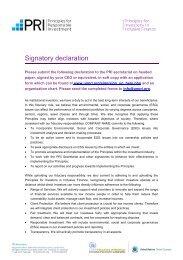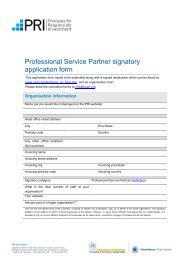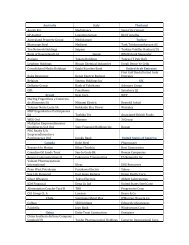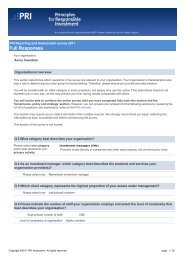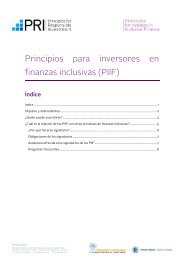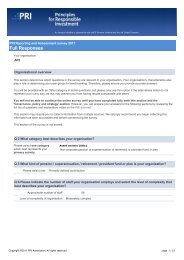investor's guide to commodities - PRI Signatory Extranet - Principles ...
investor's guide to commodities - PRI Signatory Extranet - Principles ...
investor's guide to commodities - PRI Signatory Extranet - Principles ...
- No tags were found...
Create successful ePaper yourself
Turn your PDF publications into a flip-book with our unique Google optimized e-Paper software.
10 The Responsible Inves<strong>to</strong>r’s Guide <strong>to</strong> Commodities3ASSET-CLASSOVERARCHINGCONSIDERATIONSIn the course of the project, several interviewed inves<strong>to</strong>rs and stakeholdershave challenged us <strong>to</strong> reflect on this fundamental question: Are investments in<strong>commodities</strong> at all compatible with the concept of responsible investing? Aswe show in the following sections, each approach <strong>to</strong> investing in <strong>commodities</strong>involves a range of ESG issues that can, <strong>to</strong> a certain extent, be managed andmitigated. We do not see a fundamental incompatibility with the concept ofresponsible investing if certain best-practices and precautions are followed.Nevertheless, there are substantial differences between various types ofinvestments that do matter <strong>to</strong> responsible inves<strong>to</strong>rs. The concept of responsibleinvesting relies on the possibility <strong>to</strong> analyse and actively mitigate ESGrisks (or manage opportunities) by selecting investments and/or being an activeowner. Because of the fungibility of standardised <strong>commodities</strong>, this is not possiblefor commodity derivatives and (in most cases) for physical <strong>commodities</strong>.Many responsible inves<strong>to</strong>rs also see their role as contributing <strong>to</strong> the long-termstability/viability of financial markets and <strong>to</strong> a transition <strong>to</strong> a more sustainableeconomy. The table below outlines some of the large variations between differenttypes of commodity investments in this regard (see table below).On balance, investments in real assets or in the debt/equity of companiesprovide the greatest positive “ESG leverage” <strong>to</strong> inves<strong>to</strong>rs and are best aligned <strong>to</strong>the concept of responsible investing. Physical <strong>commodities</strong> are questionableand many institutional inves<strong>to</strong>rs exclude them from their investments. Forcommodity derivatives, which are the most frequently used investment type, itis not easy <strong>to</strong> apply the concept of responsible investing and in this sense thealignment is not ideal. We nevertheless believe that responsible inves<strong>to</strong>rs canplay a positive role in this investment market by following the best-practiceshighlighted in the next section.“Long-term oriented, responsible inves<strong>to</strong>rsshould invest in productive assets and steerclear from investments in derivatives orphysical <strong>commodities</strong>”—CIO of a Dutch pension fund interviewedin the course of the project


